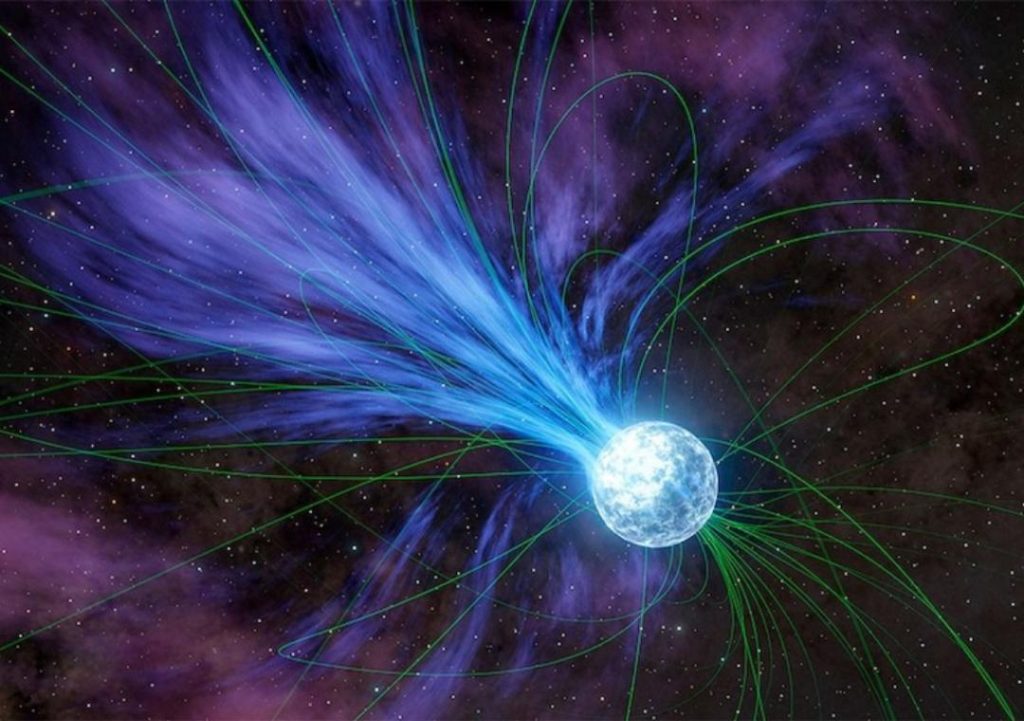
Gold & Platinum Created through Neutron Stars’ Explosions: Study
For centuries, humans have been fascinated by the origin of precious metals like gold and platinum. While we’ve long known that these metals are found on Earth, the process by which they were formed has remained a mystery. Recently, a groundbreaking study led by Columbia University student Anirudh Patel has shed light on the cosmic events that led to the creation of these valuable elements.
According to the study, magnetars – highly magnetized neutron stars – played a crucial role in the formation of gold and platinum. These magnetars, which are found in the Milky Way galaxy, undergo explosive events that release flares containing these precious elements. This discovery has significant implications for our understanding of the universe and the origins of these valuable resources.
The Formation of Magnetars and Neutron Stars
To understand how magnetars and neutron stars are formed, it’s essential to begin with the life cycle of a star. When a massive star reaches the end of its life, it undergoes a catastrophic explosion known as a supernova. This explosion is so powerful that it can be seen from millions of light-years away and is often visible to the naked eye.
In the case of magnetars, they are formed when a massive star undergoes a type of supernova known as a core-collapse event. During this process, the star’s core collapses, leading to a massive release of energy. This energy is so great that it can create a neutron star, which is an incredibly dense object made up of neutrons.
Magnetars are unique because they have extremely strong magnetic fields, which are millions of times stronger than those found on Earth. These magnetic fields are so powerful that they can generate massive amounts of energy through a process known as magnetic reconnection. This energy is released in the form of intense flares, which can be thousands of times more powerful than any solar flare.
The Explosive Events that Create Gold and Platinum
So, how do magnetars and neutron stars create gold and platinum? The answer lies in the explosive events that occur during the creation of these objects.
When a magnetar undergoes an explosive event, it releases a massive amount of energy in the form of a flare. This flare contains a range of elements, including gold and platinum. These elements are formed through a process known as rapid neutron capture, or r-process nucleosynthesis.
During this process, the intense radiation and high-energy particles in the magnetar’s flare interact with atomic nuclei, causing them to absorb neutrons and form new elements. This process is incredibly rapid, occurring over a period of just a few seconds.
The resulting elements, including gold and platinum, are then dispersed into space, where they can be incorporated into new stars, planets, and other celestial objects. Over time, these elements can be transported to other parts of the galaxy, where they can be found in the form of valuable resources.
The Frequency of Magnetar Explosions
But how often do these explosive events occur? According to the study, magnetars undergo explosive events approximately once per decade in the Milky Way galaxy. Across the observable universe, these events occur annually.
This means that the universe is constantly producing new gold and platinum through these magnetar explosions. While this process may seem slow and distant, it’s essential to remember that the universe is vast and contains countless celestial objects, each with its own unique characteristics and processes.
Implications for Our Understanding of the Universe
The discovery of magnetars and their role in the creation of gold and platinum has significant implications for our understanding of the universe. It highlights the importance of these celestial objects and the explosive events that occur within them.
This study also underscores the incredible complexity and beauty of the universe, where even the most seemingly random events can lead to the creation of valuable resources. As we continue to explore and learn more about the universe, we may discover even more surprising and fascinating connections between celestial objects and the elements that make up our world.
Conclusion
The study led by Anirudh Patel has shed new light on the origins of gold and platinum, revealing that magnetars and neutron stars play a crucial role in their creation. These explosive events, which occur approximately once per decade in the Milky Way galaxy and annually across the observable universe, release flares containing these precious elements.
As we continue to explore the universe and uncover its secrets, we may discover even more surprising connections between celestial objects and the elements that make up our world. For now, we can marvel at the incredible complexity and beauty of the universe, where even the most seemingly random events can lead to the creation of valuable resources.
Source:






